¿Buscas ampliar tu paladar en 2024? Prueba la mejor comida africana que el continente tiene para ofrecer. Confía en nosotros: tus papilas gustativas te lo agradecerán.
Arroz jollof

El arroz jollof es uno de los alimentos más conocidos de África occidental, un alimento básico definitivo. Nigeria y Ghana, en particular, son famosos por su arroz.
Como la mayoría de la cocina regional, cada país tiene su propia versión. Sin embargo, el arroz de grano largo generalmente se usa en lugar de arroz de grano corto y generalmente se prepara en una sola olla.
Otros ingredientes y condimentos difieren mucho de un lugar a otro. Sin embargo, los tomates, los chiles y las cebollas son los ingredientes más consistentes, al igual que las diferentes carnes.
Cuscús
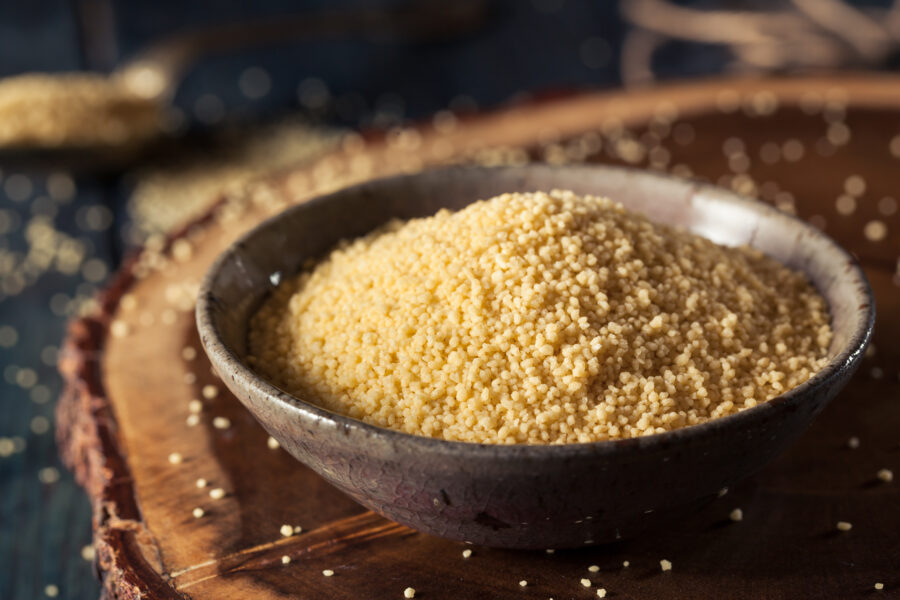
El cuscús es una parte integral de las culturas del norte de África y realza prácticamente todas las comidas en las que se incluye. El acompañamiento que se sirve depende del país.
En Túnez, por ejemplo, predomina el cuscús de pescado. Eso tampoco es todo lo que incluyen. Según el LA Times, el cuscús tunecino moderno tiende a ser picante.
Para lograrlo le agregan cilantro, comino y ajo, entre otros condimentos. El cuscús marroquí es similar, aunque un poco más dulce que su homólogo tunecino.
Injera
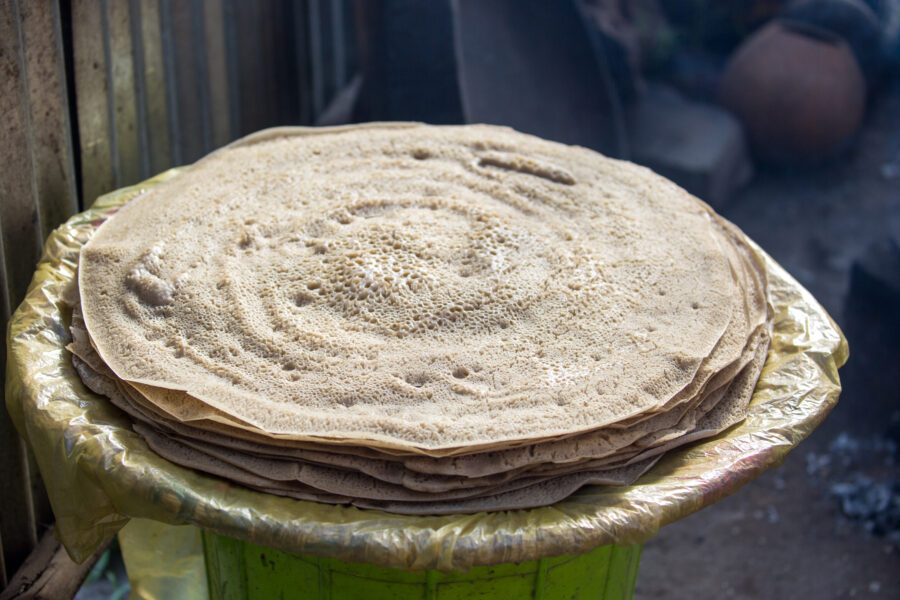
El injera es un pan plano mejor conocido por sus raíces etíopes. Sin embargo, otras naciones también tienen derechos sobre la injera, como Eritrea, Sudán y Kenia.
Este pan plano, elaborado con harina de teff, es mucho más que un simple alimento. Combina prácticamente con cualquier cosa y se utiliza para recoger y comer alimentos.
Lo que hace que el injera sea una de las mejores comidas africanas es su versatilidad. Absorbe los sabores de los guisos con los que se sirve, lo que crea comidas deliciosas en todos los aspectos.
Bunny Chow
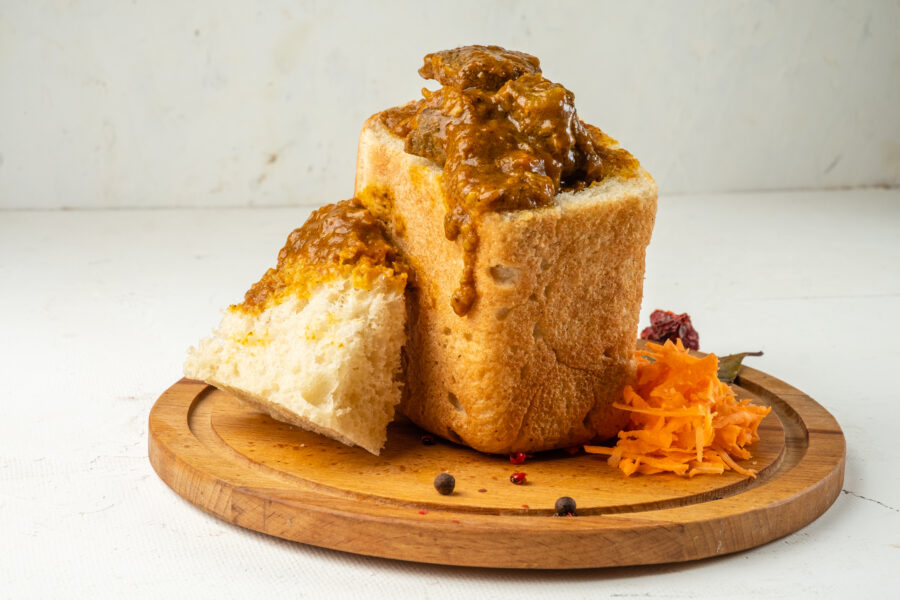
El “bunny chow” es una comida sudafricana con un toque indio. Hecho de curry y pan, se originó con trabajadores inmigrantes indios sudafricanos.
En lugar de servir el pan a un lado, el curry se sirve dentro del pan. Sin embargo, desde entonces ha evolucionado más allá de su versión original.
Hoy en día, mucha gente añade carne a su bunny chow. Las salchichas y el cordero son populares, aunque el conejito era un plato vegetariano.
Pollo piri piri
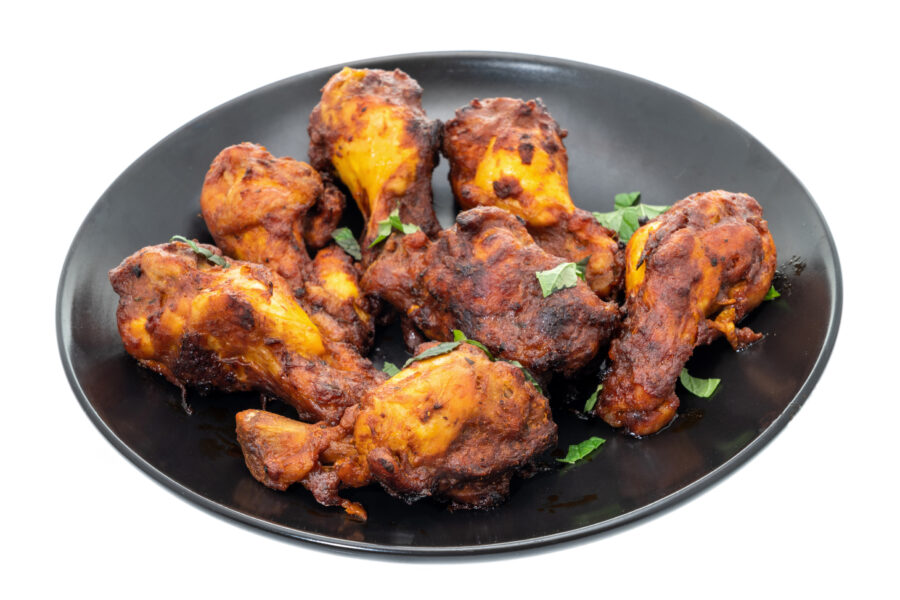
También conocido como pollo Peri Peri, esta comida africana está hecha con chiles ojo de pájaro africanos. Quizás lo conozcas como un plato portugués, pero piénsalo de nuevo.
Si bien este plato ha estado en Portugal durante siglos, ¿de dónde crees que lo obtuvieron? Así es: África. Zambia y Zimbabwe cultivaron chiles.
La clave de este plato deliciosamente picante es la salsa. Pica los chiles y mézclalos con ajo, pimentón, albahaca, aceite de oliva y limón.
Pollo moambe
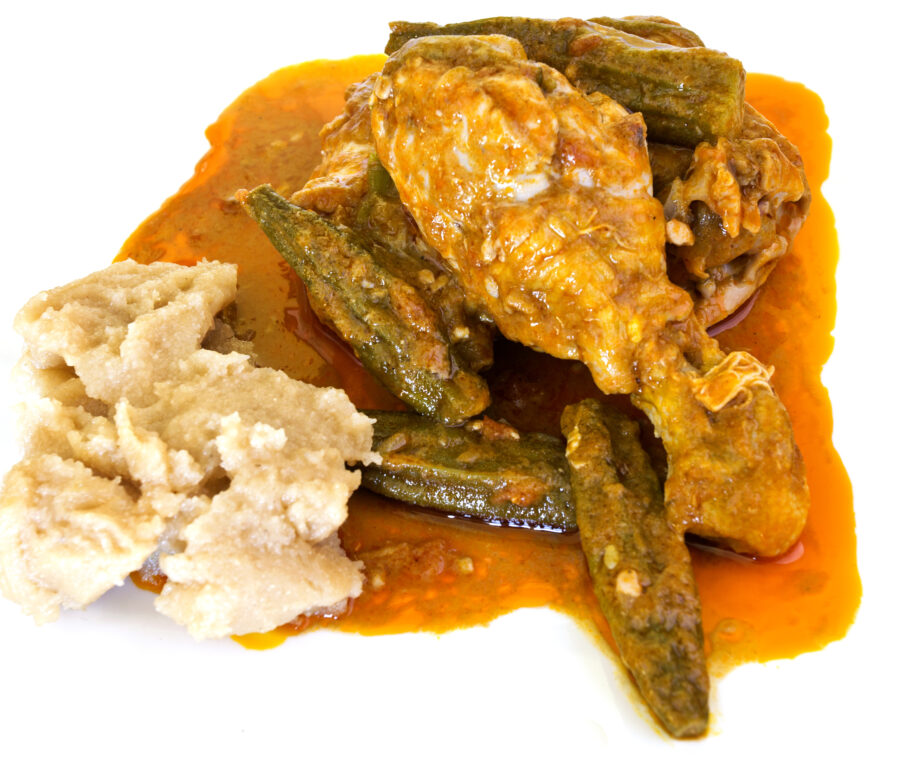
Este plato de pollo centroafricano se inspira en gran medida en el pollo peri peri. Aquí también se utilizan los mismos chiles que se utilizan en la salsa de este último.
Sin embargo, ahí es donde terminan las similitudes. El pollo Moambe depende mucho de la palma aceitera. “Moambe” en realidad se traduce como “mantequilla de palma”, en la que se cocina el pollo.
También se sirve con su propia salsa especial, elaborada con nueces de palma. Se pueden encontrar versiones de pollo moambe en Portugal, Bélgica y Brasil.
Fufu
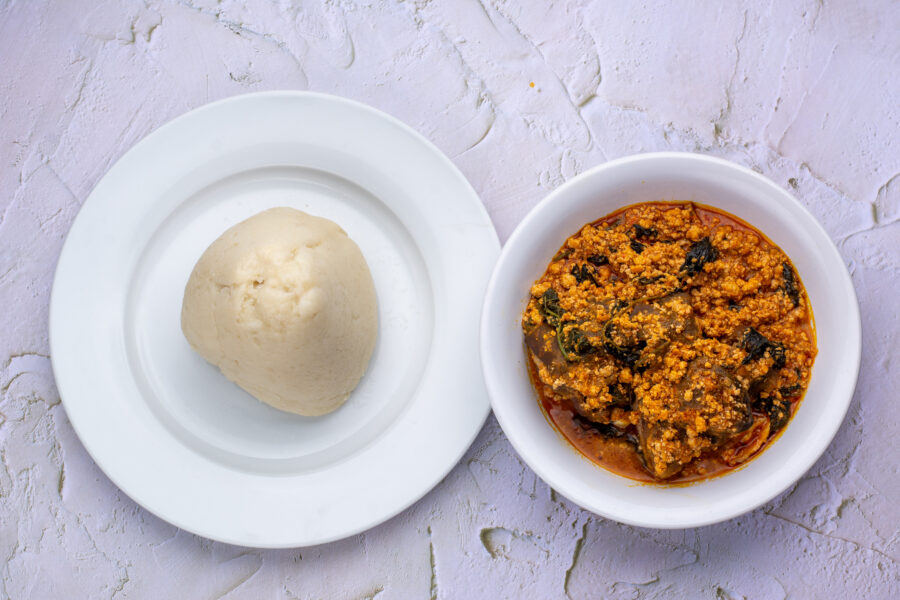
El fufu es un alimento de África occidental que se parece mucho a la masa. Si pensaras que era masa, no te equivocarías. Sin embargo, a diferencia de la masa, se come tal cual.
Por supuesto, debe servirse junto con otros platos, normalmente una sopa o salsa. La forma de elaborarlo varía mucho, dependiendo de su procedencia.
En Ghana, por ejemplo, se utiliza tradicionalmente cocoyam (también conocido como taro) o plátanos. Como puedes imaginar, esto también hace que el sabor varíe un poco.
Sopa egusi
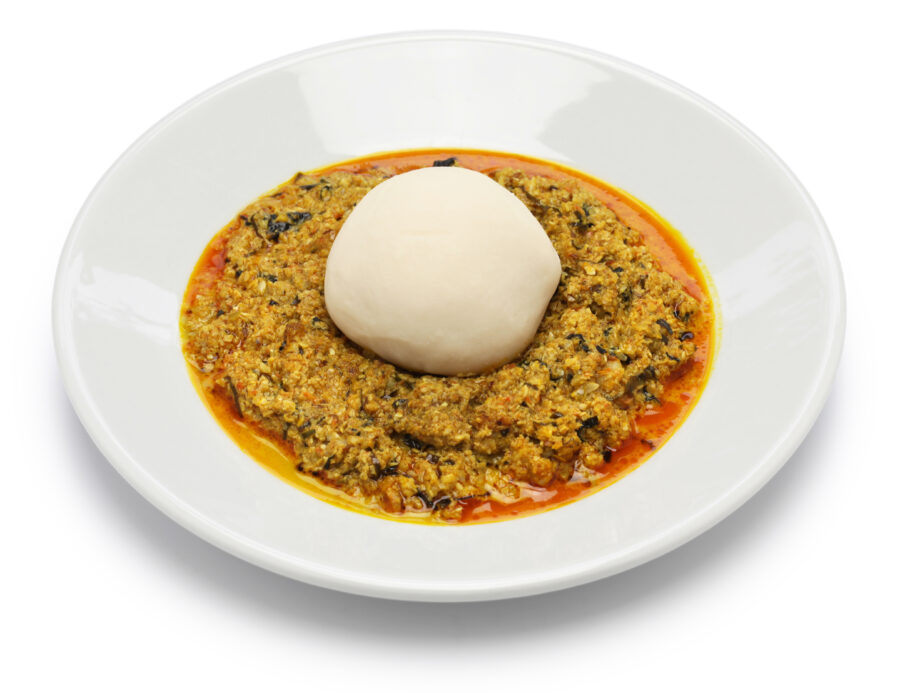
El egusi se refiere a una semilla grande que encontrarás en muchos platos de África occidental. La sopa Egusi es uno de esos platos y uno de los más populares.
Este plato, por supuesto, tiene diferencias regionales. La única constante son las semillas, que hacen que la sopa sea más espesa de lo que estás acostumbrado.
Aunque la sopa contiene chiles, no es demasiado picante. Más bien, es abundante y sabrosa, con cebollas, pimientos y fufu trabajando en conjunto para crear un plato delicioso.
Bobotie
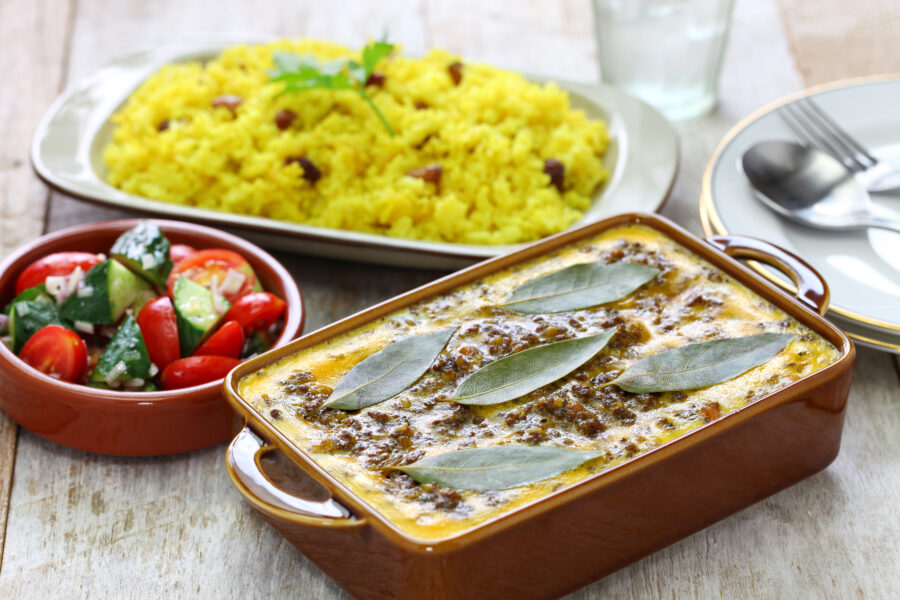
El bobotie es un plato sudafricano elaborado principalmente con carne especiada y natillas. Piense en ello como una cazuela de natillas de carne molida y huevo.
No compares “natillas” con “dulzura”. En realidad, el bobotie es bastante sabroso, a pesar de la cobertura de crema de huevo. Gran parte del sabor proviene de la carne molida.
Dado que el sabor está en la carne, ¿cómo se sazona? Las recetas específicas difieren, pero muchas incluyen curry en polvo, cebollas y frutos secos.
Maafe
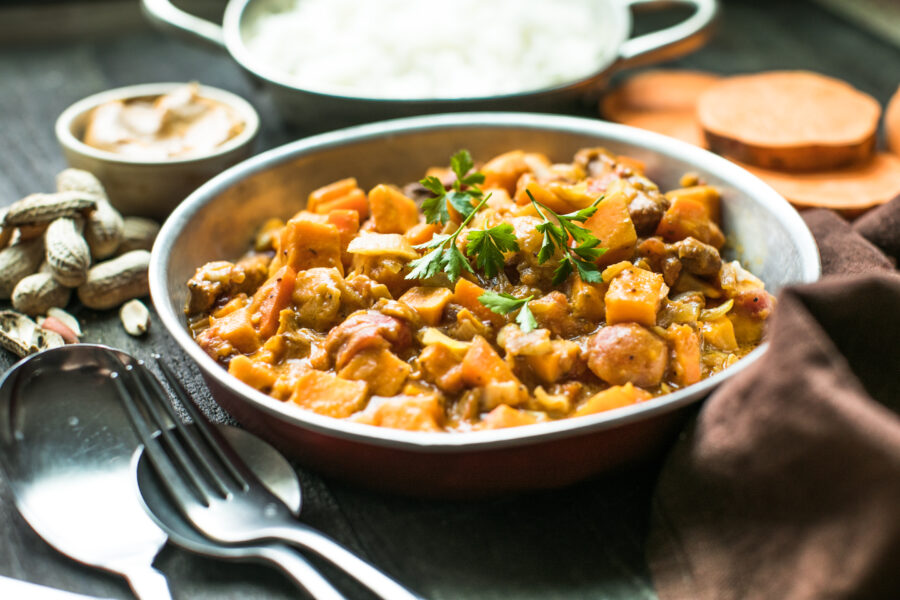
Si eres el tipo de persona que le añade maní a todo, entonces tenemos el guiso para ti. Maafe, un guiso de África occidental, utiliza mantequilla de maní y tomates.
El guiso es bastante versátil. Hay algunos ingredientes básicos necesarios, como pimientos y cebollas, pero no es necesario agregar carne.
Este plato se puede modificar para vegetarianos. Si eres vegetariano y vives de ensaladas (como yo), prueba el maafe. Ya no tenemos que vivir así.
Mielie
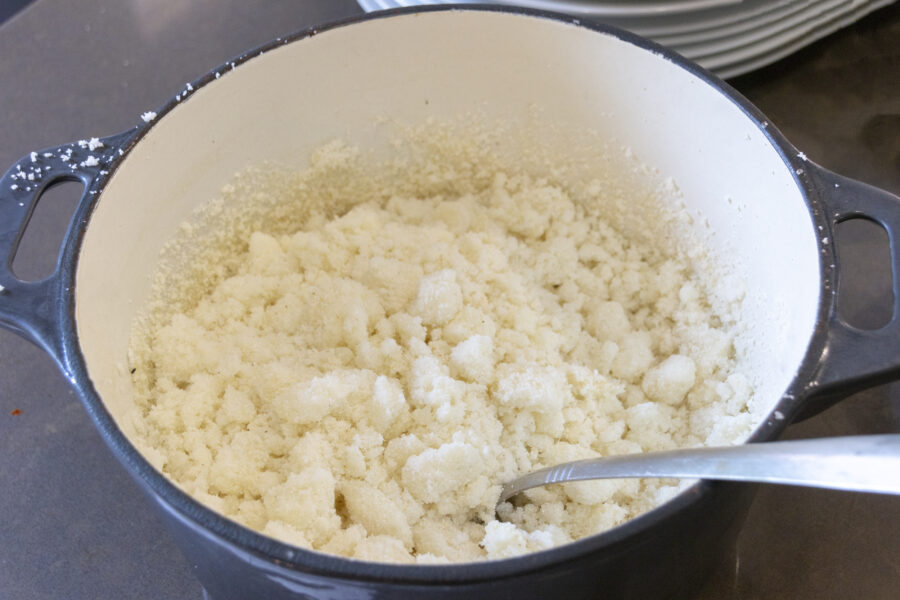
Este plato es un trotamundos. Tiene sus raíces en América, donde fue descubierta por los portugueses, quienes luego la llevaron a África.
Como puedes imaginar, la harina miele sufrió muchos cambios durante ese viaje. También conocida como “pap” o “harina harinosa”, su pariente más cercano es la sémola sureña.
Aunque se puede tomar como guarnición, normalmente se come en el desayuno. Si opta por la ruta del desayuno, cúbralo con almíbar y mantequilla.
Berberé

El berbere no es técnicamente un alimento; en realidad es un tipo de especia. Entonces, ¿por qué la incluimos como una de las mejores comidas africanas?
Esta especia es la base de muchos platos básicos de la cocina etíope y eritrea. Los pimientos rojos (como se muestra arriba) son el ingrediente clave.
Puedes comprar berebere tal cual o puedes mezclar las especias tú mismo. Según Chili Pepper Madness, también incluye ajo, jengibre, albahaca y cardamomo.
Koshari
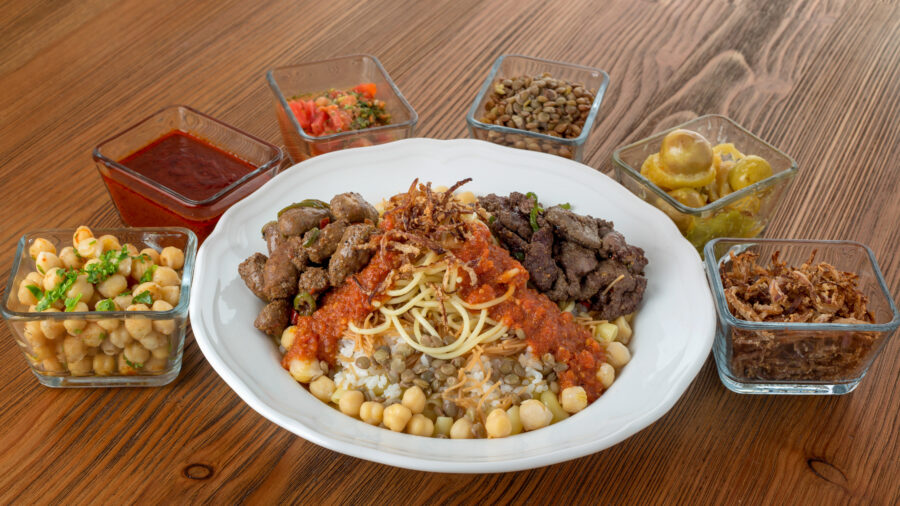
Si alguna vez te encuentras en Egipto, prueba un poco de koshari. También conocida como “kushari”, esta popular comida callejera es el plato nacional del país.
¿Y adivina qué? Es completamente vegana. Si comes carne, ¡no lo descartes inmediatamente! Las lentejas son un ingrediente clave. Cuando se preparan correctamente, son un excelente sustituto de la carne.
Aparte de las lentejas, el koshari suele prepararse con garbanzos, cebollas, tomates, ajo y pasta. Las especias incluyen comino, cilantro y chile en polvo. Habla de una bomba de sabor.
Poisson Braisé

Si eres francófono, probablemente ya sepas de qué está hecho este plato. “Poisson braisé” en francés significa “pescado estofado”. ¿El pez en cuestión? Tilapia.
Este plato es particularmente popular en Costa de Marfil (Costa de Marfil) y Camerún. El pescado (que también puede ser perca) se marina antes de cocinarlo.
La marinada varía según la región. Sin embargo, algunos ingredientes constantes son los pimientos capot picados, el ajo, la cebolla y el jugo de lima. El pescado sale crujiente.
Yassa
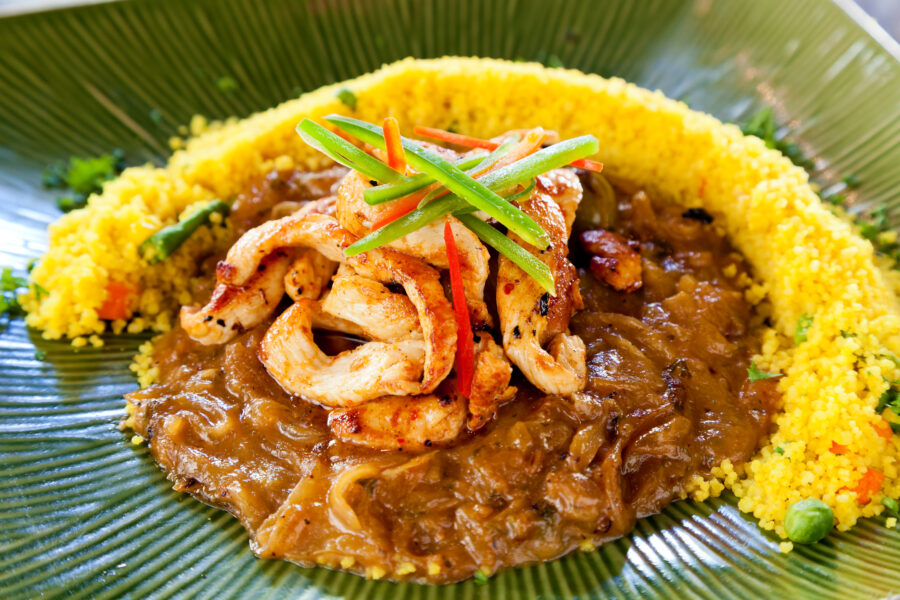
El yassa es un plato que, aunque originalmente gambiano, es popular en toda África occidental. Senegal en particular le tiene cariño y tiene su propia versión.
Este plato se puede preparar con pescado o cordero, pero el pollo yassa es el más conocido. La clave del yassa, sin embargo, está en la marinada.
La yassa senegalesa pide que se cocinen cebollas caramelizadas junto con el pollo. La marinada es picante y está hecha con ajo, limón, mostaza dijon y pimientos.
Zigni
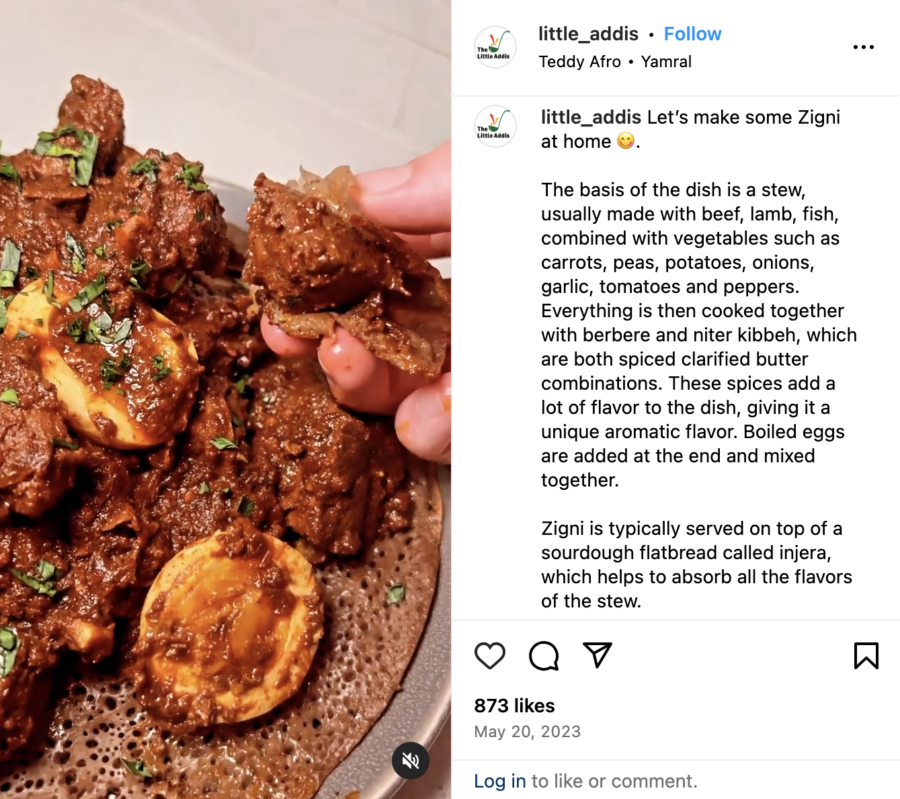
El zigni, un guiso sustancioso y carnoso, es el plato nacional de Eritrea. La injera y el berbere hacen de este guiso no solo un alimento básico de Eritrea, sino también increíblemente delicioso.
El zigni utiliza todo tipo de carnes, especialmente ternera y cordero. Conocido como “zai wat” en Etiopía, el zigni se cocina a fuego lento hasta alcanzar la perfección y se completa con carne tierna y cebolla caramelizada.
A los amantes de las comidas picantes les encantarán los zigni. Si te gustan mucho las especias, la mezcla de berbere, chile en polvo y granos de pimienta negra de zigni te sorprenderá.
Sadza
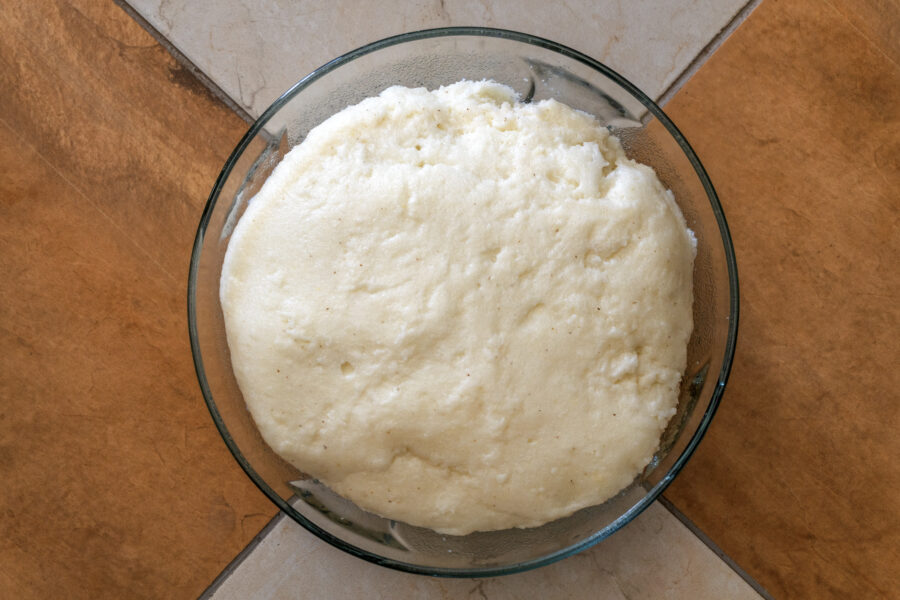
El sadza es muy similar a el fufu y el mielie. En toda África encontrarás alimentos a base de harina de maíz como este que se pueden comer junto con alimentos más sabrosos.
Hay un par de diferencias que distinguen a sadza. La palabra “sadza” es exclusiva de Zimbabwe. Es una palabra shona (una lengua bantú).
A diferencia del fufu, el sadza no se elabora con cocoyam ni plátanos. Está elaborado con harina de maíz, lo que lo acerca más a la harina de mielie en este sentido.
Thieboudienne
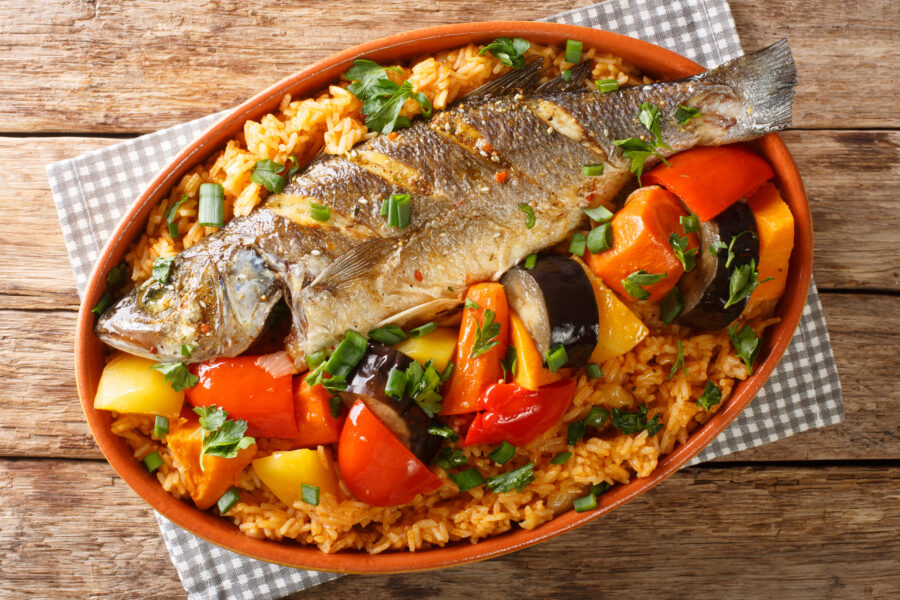
Si estás buscando ideas para comidas en una sola olla, no busque más. El thieboudienne, el plato nacional de Senegal, es una comida en una sola olla hecha con pescado, arroz jollof y verduras picadas.
Entre el pescado seco y el arroz se encuentra una amplia variedad de verduras. Tienes trozos de calabaza, berenjena, zanahoria, nabos y repollo.
El thieboudienne incluye aceite de maní, por lo que si ha estado buscando en esta lista más platos de maní, puede finalizar su búsqueda. También se condimenta con pimientos picantes.
Kapenta con sadza
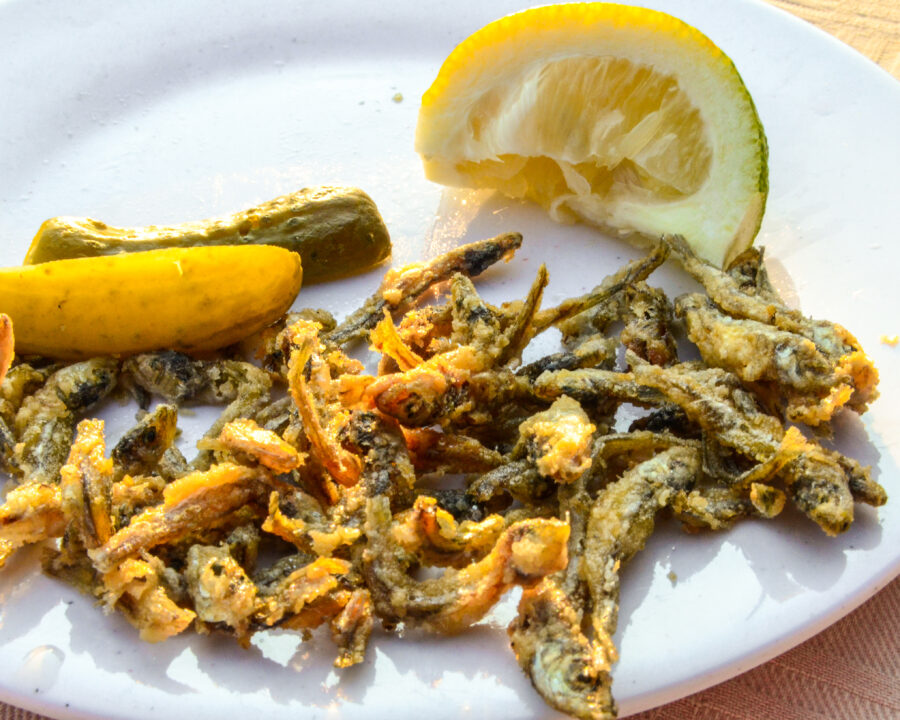
La kapenta es un tipo de sardina. La sadza combina con prácticamente toda la mejor comida africana, por lo que seguramente aparecerá en algún momento u otro.
Estos peces se pueden encontrar frente a la costa de Zambia. Generalmente están secos. Como no es necesario refrigerarlos, pueden durar mucho tiempo.
La kapenta frita es el camino a seguir. Condimente con curry y chile en polvo y cúbralo con cebolla para obtener una comida abundante y sabrosa.
Mutura
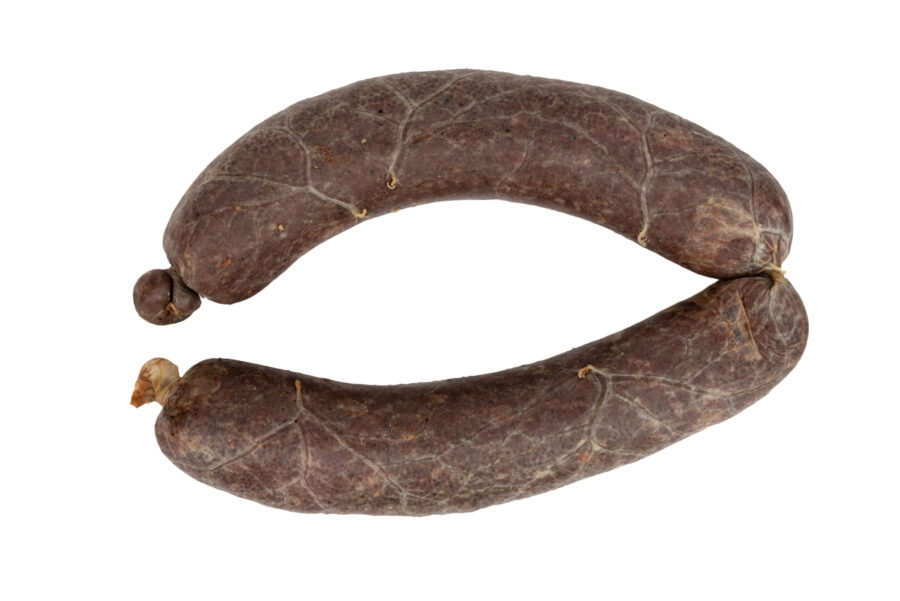
Si eres fanático de la morcilla, probablemente también lo serás de la mutura. La mutura es un tipo de morcilla y un alimento básico de Kenia.
Según Serious Eats, la mutura se distingue de otras morcillas por sus especias. A la carne se le añade jengibre, ajo, cebolletas y chile.
Si alguna vez estás en Kenia, prueba mutura. Como explica Baraka en su artículo (fantásticamente escrito) Serious Eats, la mutura no es una de esas cosas que se pueden producir en masa.
Nyama Choma
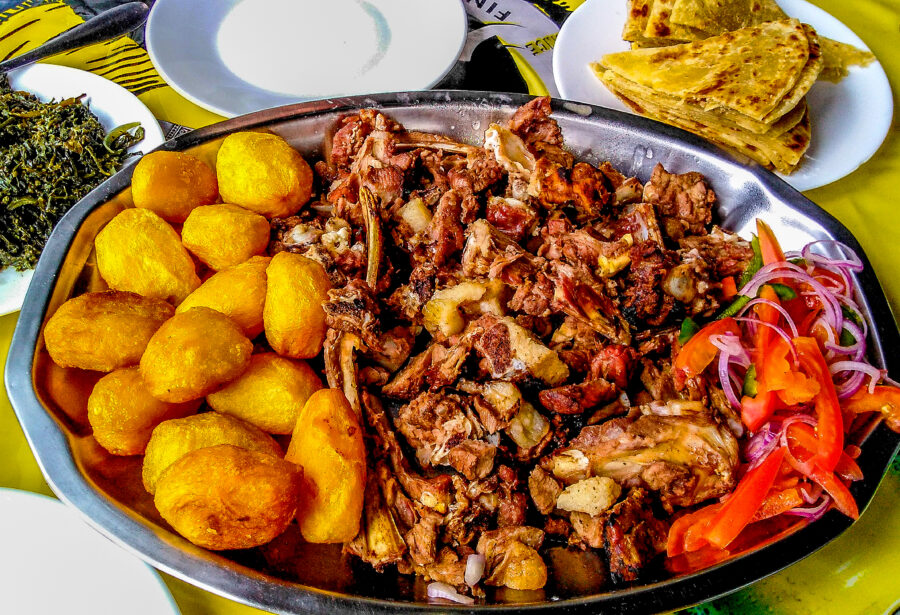
Hablando de Kenia, el nyama choma es su plato nacional. Aunque para este plato se puede utilizar carne de res y de cabra, en Kenia se suele utilizar carne de cabra.
“Nyama choma” en swahili significa “carne a la parrilla”. La comida, que se cocina sobre una parrilla de carbón, generalmente se prepara en grandes cantidades y se reserva para ocasiones especiales.
Nyama choma es el nombre de la carne y no tiene guarniciones específicas (bueno, además de cerveza). Puedes servirlo con lo que quieras.
Nshima
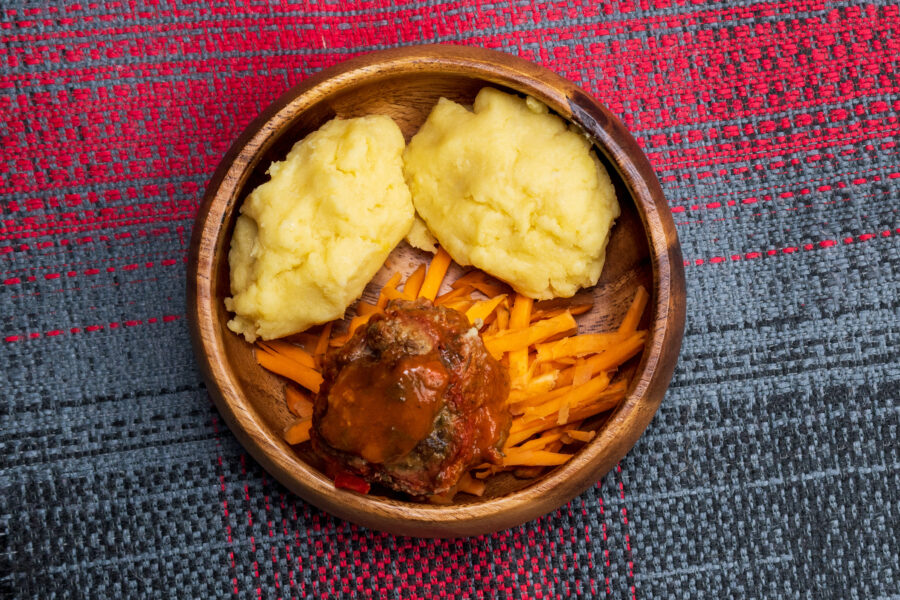
Sudáfrica tiene harina de mielie, Zimbabwe tiene sadza, Ghana tiene fufu… ¿ves a dónde vamos con esto? La nshima es la versión zambiana del alimento básico africano.
Al igual que la harina de sadza y mielie, el nshima se elabora con maíz, no con fruta. Es el acompañamiento perfecto, ya que absorbe los sabores de lo que sea que se sirva.
Como muchos otros países africanos, el nshima se come con guisos. Sin embargo, en Zambia, específicamente, el nshima a menudo se come y se saborea con hojas de calabaza (chibwabwa).
Cachupa
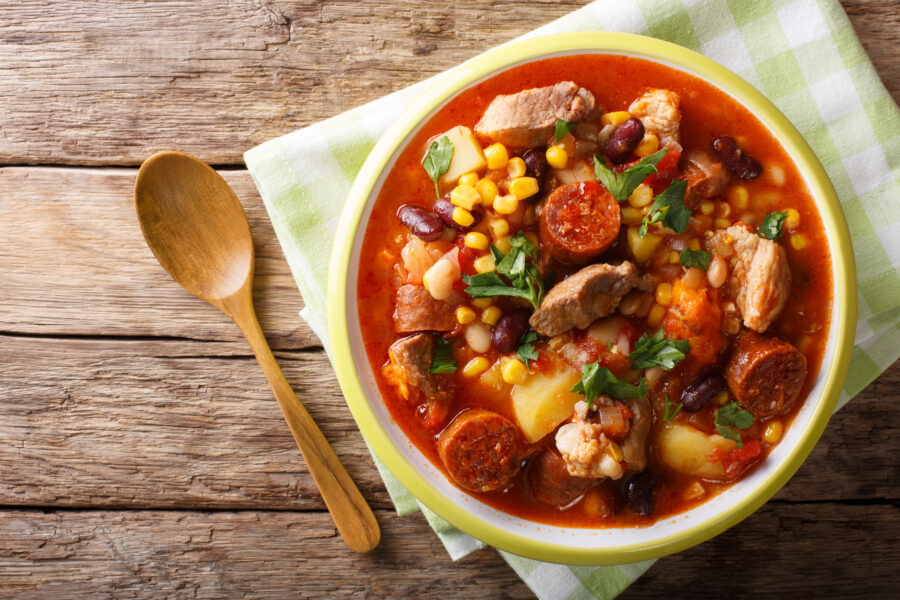
La cachupa es un plato de África occidental procedente de las islas de Cabo Verde. A primera vista, parece un guiso abundante normal. Es delicioso, pero ¿en qué es único?
Bueno, son básicamente dos platos en uno. La cachupa produce muchas sobras que a la gente le gusta freír. Este método de cocción diferente transforma el plato en una “cachupa guisada”.
El guiso en sí se cocina a fuego lento. Se puede preparar con muchas carnes, pero la morcilla es la más popular. También se añaden maíz molido, frijoles y batatas.
Shakshouka
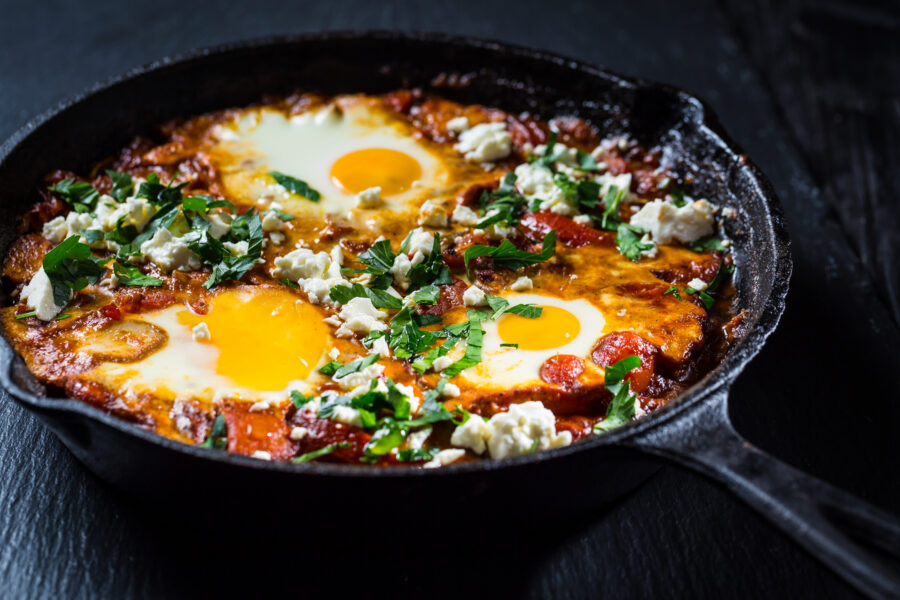
La shakshouka (también escrito “shakshuka”) se come tanto en el norte de África como en Medio Oriente. Si buscas subir de nivel tus desayunos, esto te encantará.
La salsa se hace con pimientos morrones y tomates, y en su interior se escalfan los huevos. Las especias incluyen ajo, comino y pimentón.
Puede parecer desalentador, pero no es demasiado difícil de hacer. Uno de los mejores canales de cocina de YouTube, Food Wishes, publicó un excelente tutorial al respecto.
Efo Riro
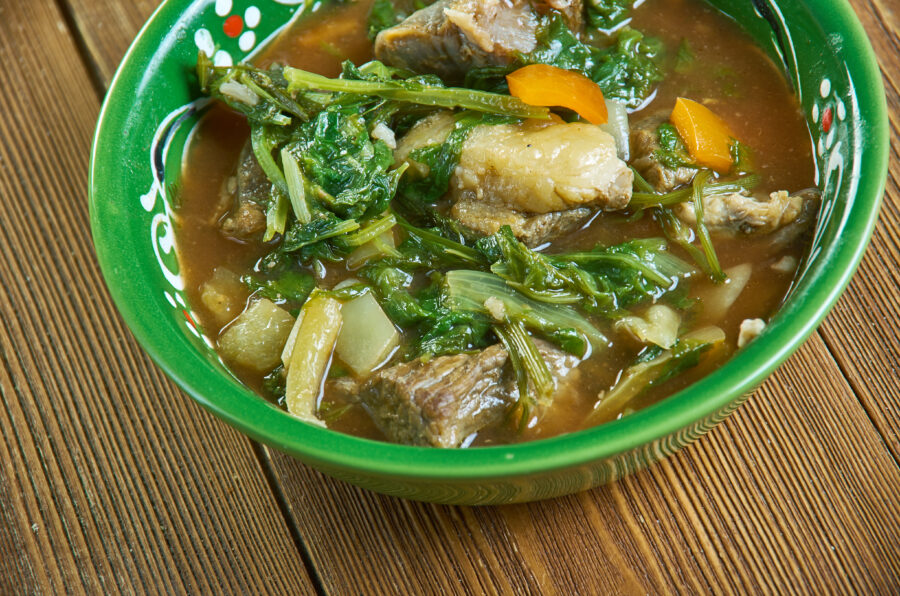
El efo riro es una comida yoruba que se come principalmente en el oeste de Nigeria y en partes de Benin y Togo (tierra yoruba). Es un tipo de sopa de verduras.
Sin embargo, no siempre está hecho únicamente de verduras. Muchas recetas incluyen pescados y mariscos. Aparte de eso, no se utiliza mucha carne. No es un plato con carne.
Entonces, ¿qué tipo de verduras utiliza efo riro? Por supuesto, varía, pero los pimientos morrones, las cebollas y las verduras de hojas verdes son los más comunes.
Alloco
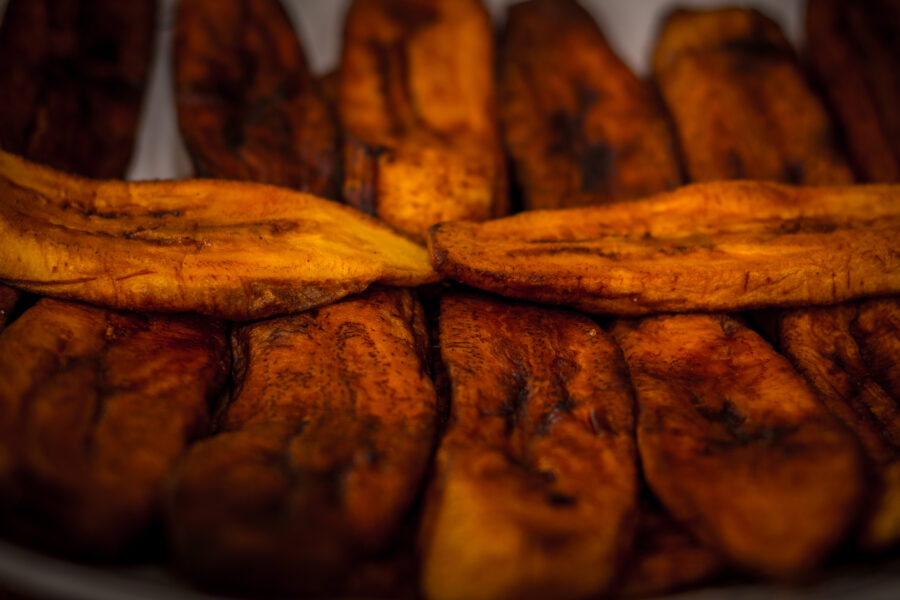
“Alloco”, término procedente de Costa de Marfil, se refiere a los plátanos fritos. Se comen en toda África occidental, aunque tienen muchos nombres diferentes.
También conocido como “dodo”, el alloco es popular como guarnición y refrigerio. Como muchos otros alimentos africanos, se comen con chiles y cebollas.
Alloco es bastante fácil de hacer y conseguir. Es una comida callejera muy popular. Los plátanos fritos, en general, son un alimento básico en muchas culturas diferentes.
Lablabi
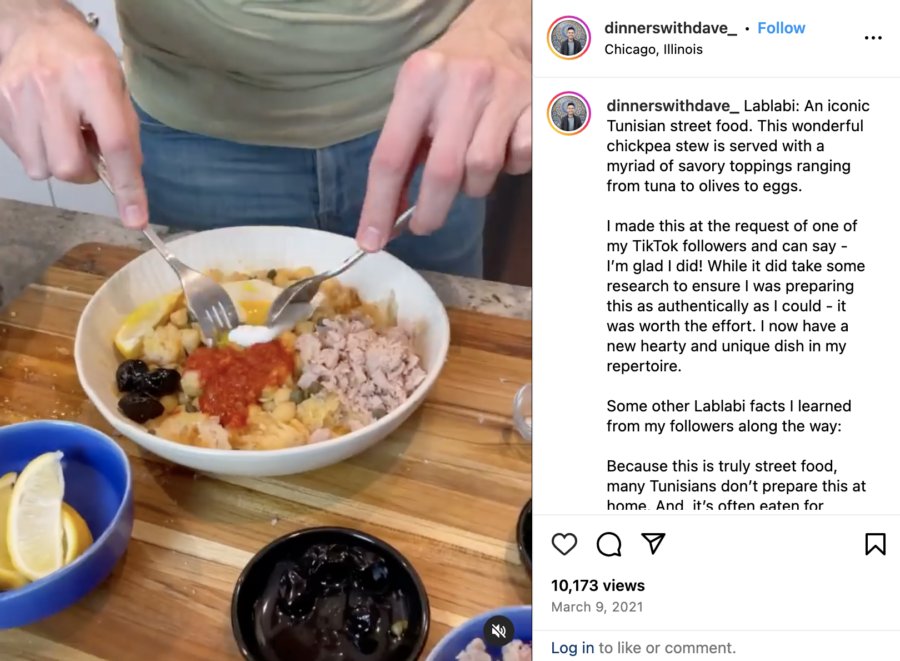
El lablabi es un guiso (o sopa) tunecino elaborado con garbanzos asados, ajo y comino. A menudo se sirve junto con trozos de pan duro y duro.
Esta es una comida callejera popular que tiene tantas variaciones como vendedores. Algunas versiones, por ejemplo, se sirven con huevo escalfado y limón.
Cualquiera sea el caso, el lablabi es un plato cálido y abundante que adorará a los amantes de los garbanzos. Si estás buscando una manera de consumir tu pan, ésta es la solución.
Matoke
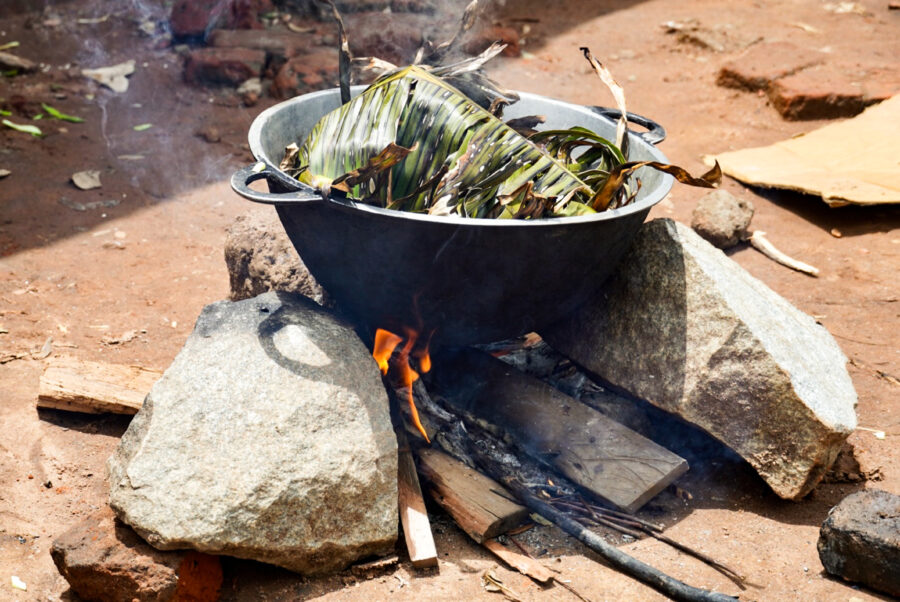
El matoke puede referirse a un tipo de plátano de África Oriental o a un plato popular elaborado con ellos. Como hablamos de la mejor comida africana, nos referimos al plato.
Los plátanos generalmente se cuecen al vapor sobre fuego de leña (como se muestra arriba). Luego, se guisan con salsa de mantequilla de maní, cebollas, tomates y varios pimientos picantes.
Si decides agregar carne, la ternera y el cordero son opciones sólidas. Si eres vegetariano, puedes cocinarlo con zanahorias y patatas.
Omo Tuo
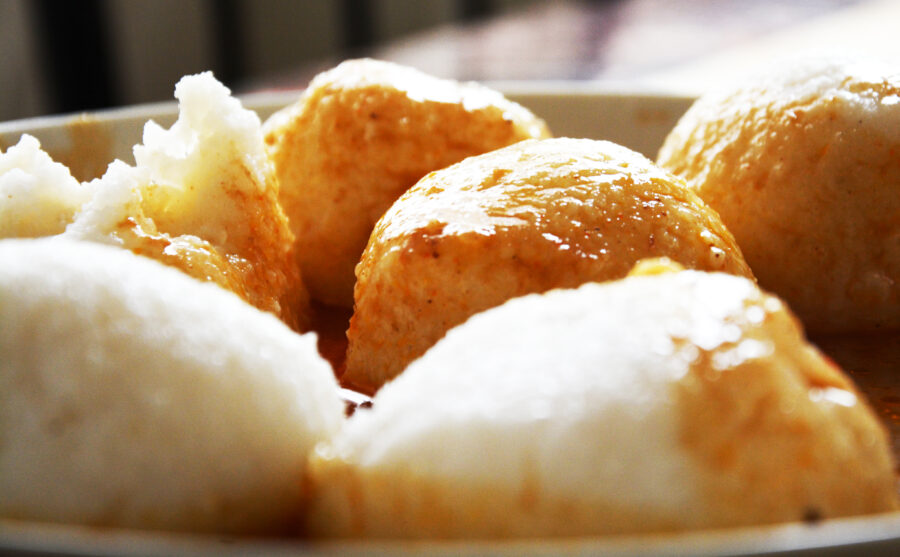
El omo tuu se traduce directamente como “bolas de arroz”, que es más o menos lo que son. Son originarios de Ghana y son un alimento básico de Ghana.
Los omo tuo son excelentes para absorber los sabores de cualquier comida que se les sirva. Por lo tanto, en realidad no se comen solos. Por lo general, se sirven con sopa.
La sopa con la que se sirven más popularmente es nkate nkwan, o sopa de maní (también conocida como maní). La sopa en sí está hecha de aves, tomates y ajo.
Tute Ne Mbalala
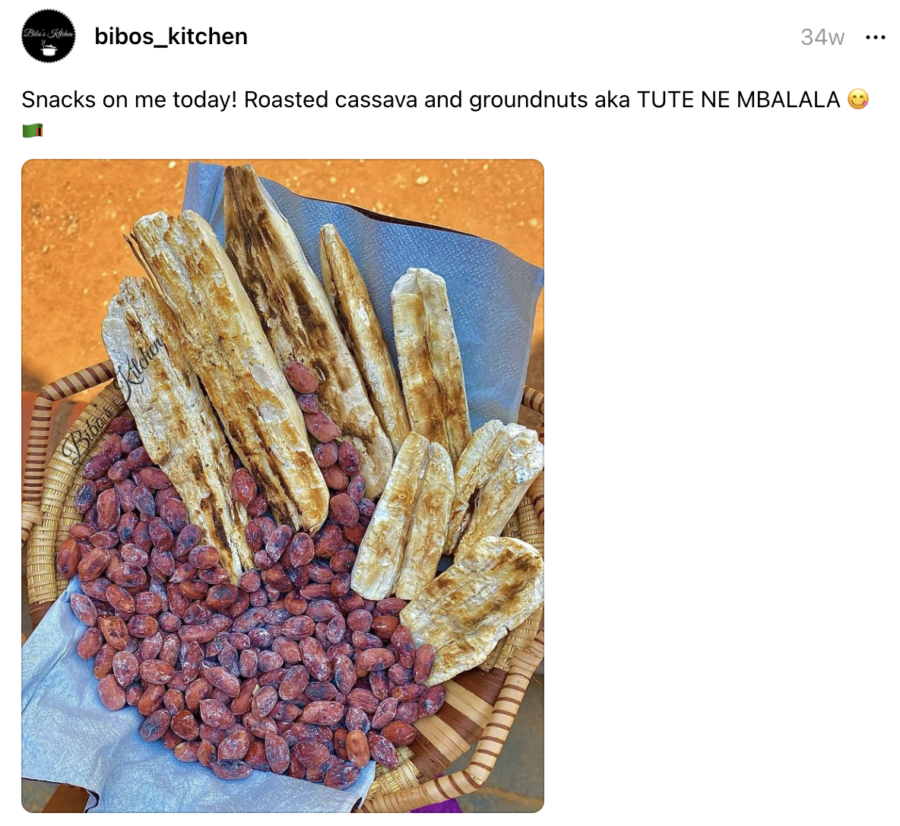
El nombre “tute ne mbalala” se traduce como “yuca y maní”. Estos dos alimentos se combinan para crear una comida tradicional de Zambia que es deliciosa y nutritiva.
Entonces, sabemos que el maní es maní. ¿Pero qué es la yuca? La yuca, también conocida como yuca, es un tubérculo. Ambos se pueden comer tal cual o convertirse en una comida.
Una de las comidas que podrías hacer con esto es el guiso. Puedes usar mantequilla de maní o maní como base para una salsa y agregarle mandioca picada.
Chakalaka
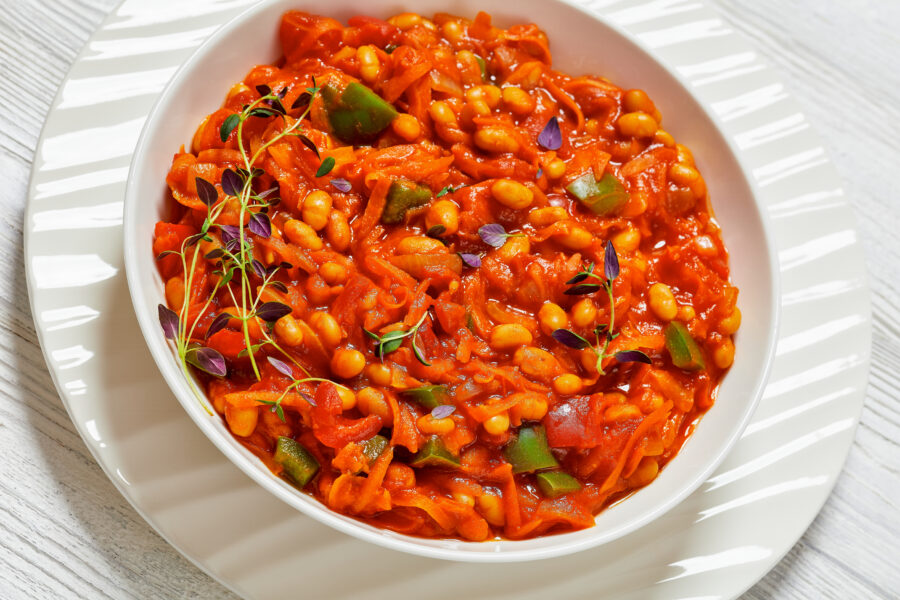
Este es un plato picante de origen sudafricano y generalmente se sirve junto con la comida mielie. Es otro plato vegetariano abundante, como muchas otras comidas africanas.
Las variaciones difieren, pero la mayoría de los chakalaka incluyen pimientos morrones, tomates, frijoles y otras verduras, como zanahorias. Los chiles son particularmente populares, por lo que el plato tiende a ser picante.
Si no tienes a mano los ingredientes para hacer harina de mielie, no te preocupes. Chakalaka también se puede servir con arroz, pan o carne.
Konkonte
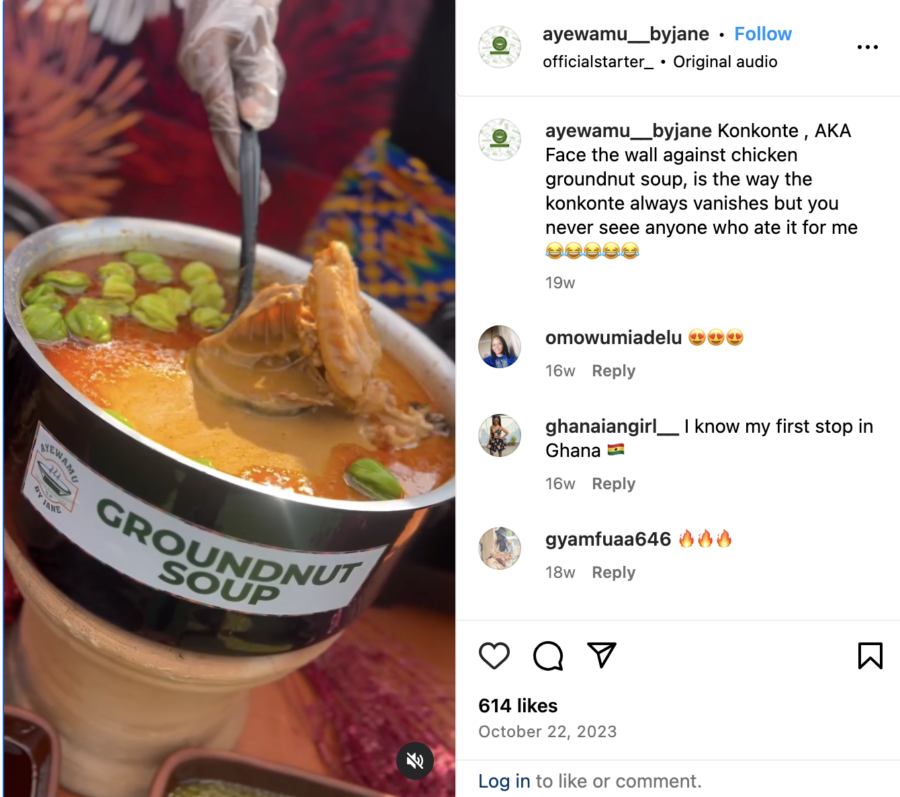
¿Recuerdas cuando mencionamos que había alimentos elaborados tanto con yuca como con maní? Konkonte, o “mirar a la pared”, es un ejemplo de este tipo de plato.
El caldo para esta sopa de Ghana se elabora con yuca en polvo hervida, que es lo que da color marrón al líquido. Se utilizan cacahuetes/cacahuetes para darle sabor.
Por lo general, se agrega pollo o cabra a la sopa, junto con cualquier cantidad de verduras. Si quieres, también puedes añadir huevos duros.
Los mejores platillos africanos: ¿Cuál es tu favorito?
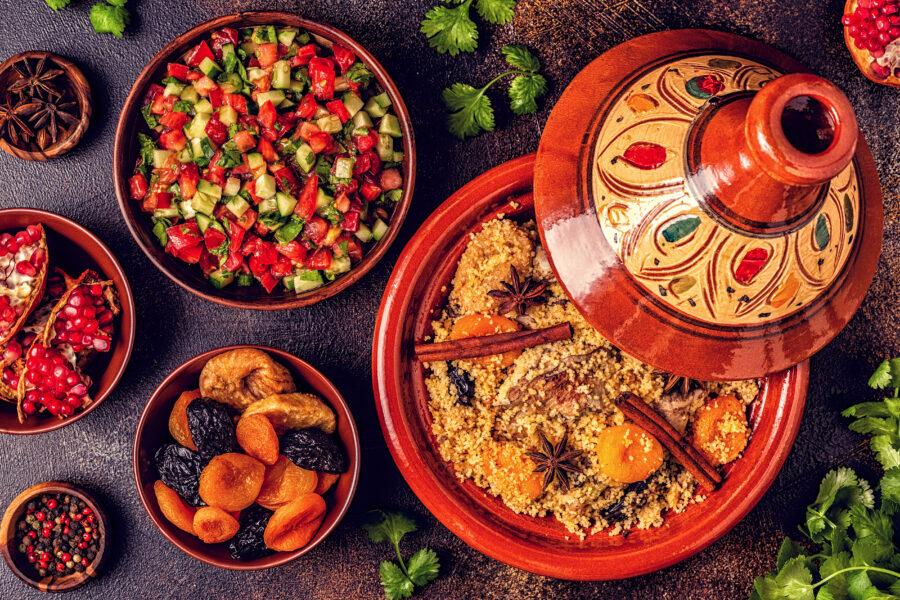
Cuando se trata de la mejor comida africana, es difícil elegir solo un plato. No hay absolutamente ninguna manera de que pudiéramos haber hecho eso.
Ahora que has visto la gran variedad de comida africana que existe, ¿a qué estás esperando? No hay mejor manera de ampliar tu paladar.
